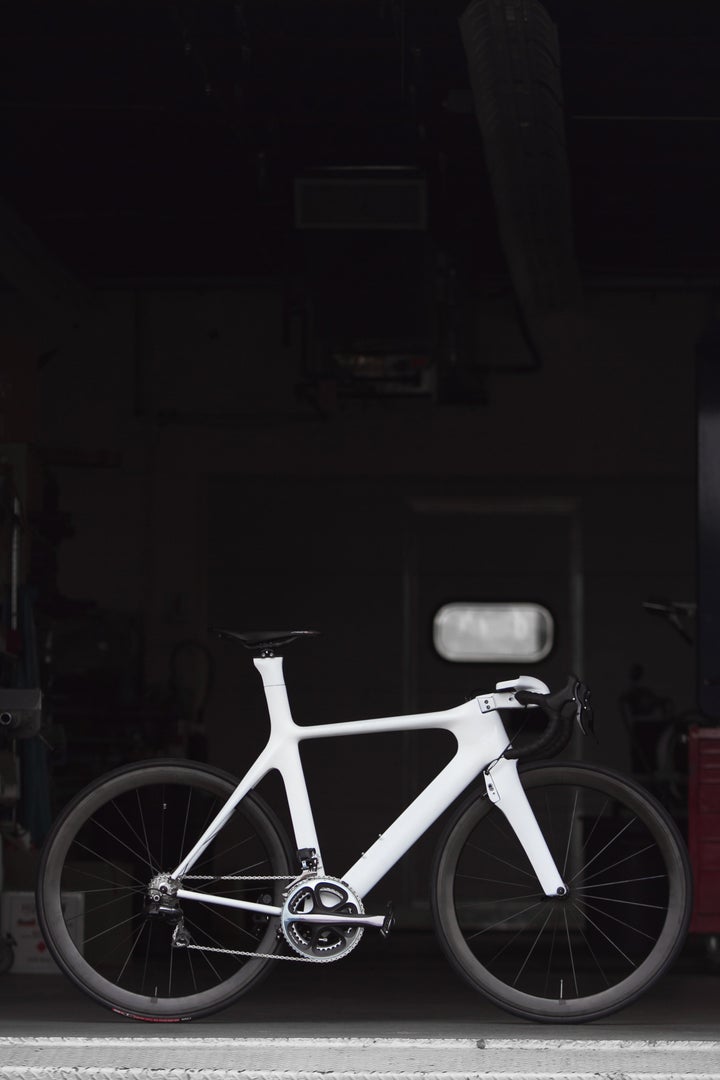
By: Francie Diep, InnovationNewsDaily Staff Writer
Published: 03/10/2012 02:29 PM EST on InnovationNewsDaily
AUSTIN - There were about fifteen minutes before his presentation started, and Patrick Miller was worried about wireless interference. That's because he was about to demonstrate a bike whose gears he could change with his mind.
In 2011, Toyota commissioned the high-tech marketing firm Deeplocal to create an unusual Prius campaign. The firm came up with a mind-controlled bike. As Deeplocal's senior creative engineer, Miller was responsible for developing the wireless helmet system that brought brain waves to bike gears. Parlee Cycles, a company that makes carbon-fiber racing bicycles, crafted the bike's frame. They finished the project, called the Prius Project Concept Bike, in July 2011 and on March 9, 2012, showed it at the South by Southwest music, film and interactive conference.
Miller explained how the bike worked to InnovationNewsDaily while pedaling away, during a pre-presentation test. The rider wears a commercially-available neuro-headset that Miller hacked and stuck inside a helmet. The headset detects electrical signals from the wearer's brain, then sends the pattern to a computer, usually a netbook or tablet strapped to the rider's back inside a vest. For this indoor presentation, Miller used his laptop.
“That translates the signals into commands: Shift up or shift down,” he said. “That then talks to a microcontroller inside here,” he said, pointing to a thicker part of the bike frame underneath the handlebars, “which I put a big antenna on, so hopefully there won't be any communication issues. That then talks to the electronic shifting system.”
None of the technologies in the bike are particularly new, he said. Instead, they're a “mashup of existing technologies.” For him, the hardest part of the project was actually learning to think in the right way to change the gears. Later on, during the main presentation, he explained that the neuro-headset doesn't know the universal, human ideas of “up” and “down.” Instead, a person trains with the system, teaching it his own “up” and “down” thoughts. That means, however, he needs to create up and down thoughts that are readable to the bike. “I'm thinking of a reproducible pattern,” Miller said, “this reproducible thought in my brain that results in a pattern the EEG headset can read.”
“I found the thing that best works for me is, I actually envision arrows, almost.”
During the presentation, Miller also talked about the bike's other wireless capabilities. The bicycle monitors the rider's cycling and can downshift if it senses the rider's pedaling slows on an incline. An iPhone app that goes with the bike will show the rider's speed, cadence of pedaling and, if the rider wears a heart monitor, heartrate. The app also comes with a gear-shifter that overrides the mental shifting; the rider just has to push UP or DOWN buttons on the smartphone face. Riders can see the app from a dock for the iPhone that's built into the handlebars.
The electronic shifting system, including the brake cables, is hidden inside the Parlee-made bike frame, moderator John Waston said during the March 9 presentation. Watson writes the cycling blog “Prolly is Not Probably” and was commissioned by Toyota to blog about the bike during its development throughout the spring and summer of 2011. Keeping the cables inside improves the bike's aerodynamics, Watson said, as does molding the brakes into the fork of the bike. The resulting lines are smooth and spare.
Because of the focus needed to work the bike, and because it was meant only as a marketing event for Toyota, the mind-controlled bicycle won't be made commercially. Parlee has built a new, aerodynamic, hand-controlled bicycle, however, said Bob Parlee of Parlee Cycles, who also presented at the demonstration. Perhaps the new design will take some lessons from the Prius bike and look something like its glamorous predecessor. Parlee has sent the new bike to a wind tunnel for testing, he said.
In the end, Miller's demonstration went off successfully. There were a couple minutes when he couldn't shift gears, because of the interference from all of the other devices in the room—the laptops and smartphones of audience members and thousands of conference attendees all around. (He was also nervous about presenting, which might affect his focus, his coworker Heather Estes told InnovationNewsDaily before the presentation started.) At last, however, as he leaned forward over the handlebars with his headset in his hair, the gears clicked up and clicked down behind his pedaling feet. The audience burst into applause.
You can follow InnovationNewsDaily staff writer Francie Diep on Twitter @franciediep. Follow InnovationNewsDaily on Twitter @News_Innovation, or on Facebook.